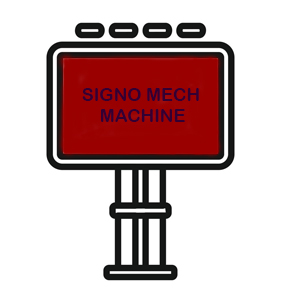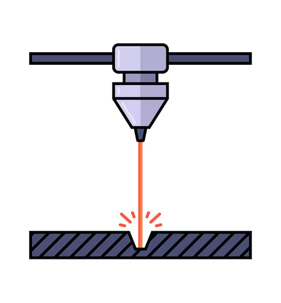A Step-By-Step Guide To The Process Of Shipbuilding
Published On: Oct 01, 2022 by Pathak

It’s safe to say the process of shipbuilding is complicated to describe or contemplate. Building a small boat is relatively straightforward, even if the vessel has an engine and electronic components. The process of fabricating it shouldn’t last more than a couple of months. Things won’t remain as simple when ships enter the picture. Just think of a two-hundred-meter-long cargo vessel. Shipbuilders create them in pieces and assemble them later. It takes years, and they cost almost millions. This topic will attempt to explain the shipbuilding process step by step.
The design phase
Shipbuilders break this particular stage into two parts – the basic design and the detailed design. The basic design aspect involves settling the demands of the ship owner by meeting the order beforehand and planning everything to deliver the highest performance despite limitations. The second section incorporates subdividing the drawings and blueprints and the information compiled in the design stage. The detailed design portion, as you can imagine, is about creating meticulous designs to ensure every aspect of the project remains rational. The shipbuilders will start their work based on the drawings.
The lofting phase
The designers will scale down the drawing and omit the unnecessary sections to ensure they don’t cut steel plates using the Roll Turning Lathe Machine. Additionally, they’ll unfold the drawing on a plane surface because they’ll construct the vessel on a curved surface. Lofting fundamentally means creating the model the designers can cut and assemble based on the drawing. Previously, shipbuilders and vessel designers created models of the original size. Today, however, they do everything on computers.
Numerical control cutting
Numerical control cutting takes place based on the model produced during lofting using parts cut out from steel plates using a lathe machine fabricated by an Industrial Machines Manufacturer. In some countries, shipbuilders use lathe machines, but in other, more technologically advanced nations, the process of numerical control cutting is mechanized. Every aspect of this stage of shipbuilding happens automatically. The engineers only need to provide the data of the lofted drawing to the numerical control cutting machine. It takes care of the marking and filling in the names or the installation location of the parts.
Bending
Ships have a complicatedly curved surface. Naturally, shipbuilders have to bend the steel plates. They push it with a press machine or heat the surface of the plates with gas burners. It’s a delicate process, and they have to be extra careful while bending the plates. Simultaneously, they must ensure the angle of curvature matches the model. Usually, the work of bending takes place under the watchful eyes and skilled hands of the most talented artisans. It’s next to impossible to achieve the desired curvature while maintaining integrity without the expertise of these people.
Assembling
It becomes somewhat inefficient to construct a massive ship because completing a single project takes too much time. That’s why the best shipbuilders adhere to the method of block construction. To be precise, they divide the blocks according to their size and assemble everything in the shipyard. They weld the parts of the ship constructed during the numerical control cutting and bending processes and assemble them in a three-dimensional block.
Block installation and assembly
Shipbuilders install and join the assembled blocks in the correct order on a building berth using a crane. Then, they assemble all the individual elements to form the final ship. The artisans have to fix them in the appropriate positions. If for any reason, the ship gets warped, or the fixed position of the block is wrong, everything will go down the drain. Then again, every block weighs close to one hundred and fifty tons. Understandably, assembling requires serious labor and technique.
Painting
Once the shipbuilders complete assembling the parts, the painters start their work. Painting a vessel isn’t only about improving appearances. It also ensures safety by eliminating corrosion. Furthermore, a painting standard gets bolstered for complying with environmental problems. Naturally, this part of the entire venture of shipbuilding deserves attention.
Launching
After completing the processes of block installation and painting, the vessel enters the water for the first time. Through this process, the shipbuilders check the ship's performance standards. The building berth inclines in the direction of the water body like a slide and allows the vessel to slide down and float. It goes without saying that the procedure of launching is nerve-wracking for the shipbuilders. After all, it informs them whether their work is seaworthy at all or not. Usually, shipbuilding companies invite many people on the launching day. Everyone, including the staff members and investors, grace the day with their presence.
Outfitting
If the ship floats perfectly, the shipbuilders move on to the next phase of outfitting. They equip the vessel’s hull with pipes, and an engine, and work on the interiors by adding electric wires. About seventy percent of the work is over once the shipbuilders reach the launching phase. After outfitting it, they moor it at the quay to complete the rest of the work. The shipbuilders conduct inspections of the equipment used in outfitting the hull while ensuring everything is steady.
Trial run
After outfitting the vessel, the shipbuilders conduct a few performance tests, such as measuring the ship's speed and turning capabilities by running it. Then, they confirm with the owner to let them know that the vessel is ready for delivery and possesses all the desired specifications. Simultaneously, the shipbuilders conduct a functionality test of the installed apparatuses. Everything has to be in perfect order if the shipbuilders expect to cater to the requirements of their clients.
The last stage
The final stage is where the ship leaves the shipyard and sets sail for the ocean. On that day, the crew members gather, and folks from various nationalities visit the premises to witness the results of the shipbuilders’ hard work.
If everything is in perfect order, the vessel will set out on its first long voyage. The owner and the shipyard staff will stand at the quay and watch the ship sail away and vanish into the horizon.
Lastest Articles
-
Embracing NC Hydraulic Press Brake Technology in Middle East Factories
Being a prominent center for indust... -
What machines are used to set up an Electrical Modular Box Plant
Attention all aspiring entrepreneur... -
Manual Process For Making Steel Almirah
Steel almirah are not only durable ... -
Semi Automatic Almirah Making Machines
Streamlining Production Processes w... -
Steel Almirah Manufacturing With Fully Automatic High Precision Machines
Welcome to the world of precision a... -
Unlocking the Power of Precision Understanding the Purpose and Functionality of Drilling Machines
A drilling machine is a tool used f... -
A Beginners Guide to C-Frame Presses for Industrial Applications
Welcome to the world of C-frame pre... -
Busbar Machine Applications in Automotive Manufacturing
Busbar Machine Applications i... -
How Busbar Machines Contribute to Electrical Safety and Reliability
How Busbar Machines Contribute to E... -
A Beginner's Guide to Busbar Fabrication and Assembly
A Beginner's Guide to Busbar Fabric...










































